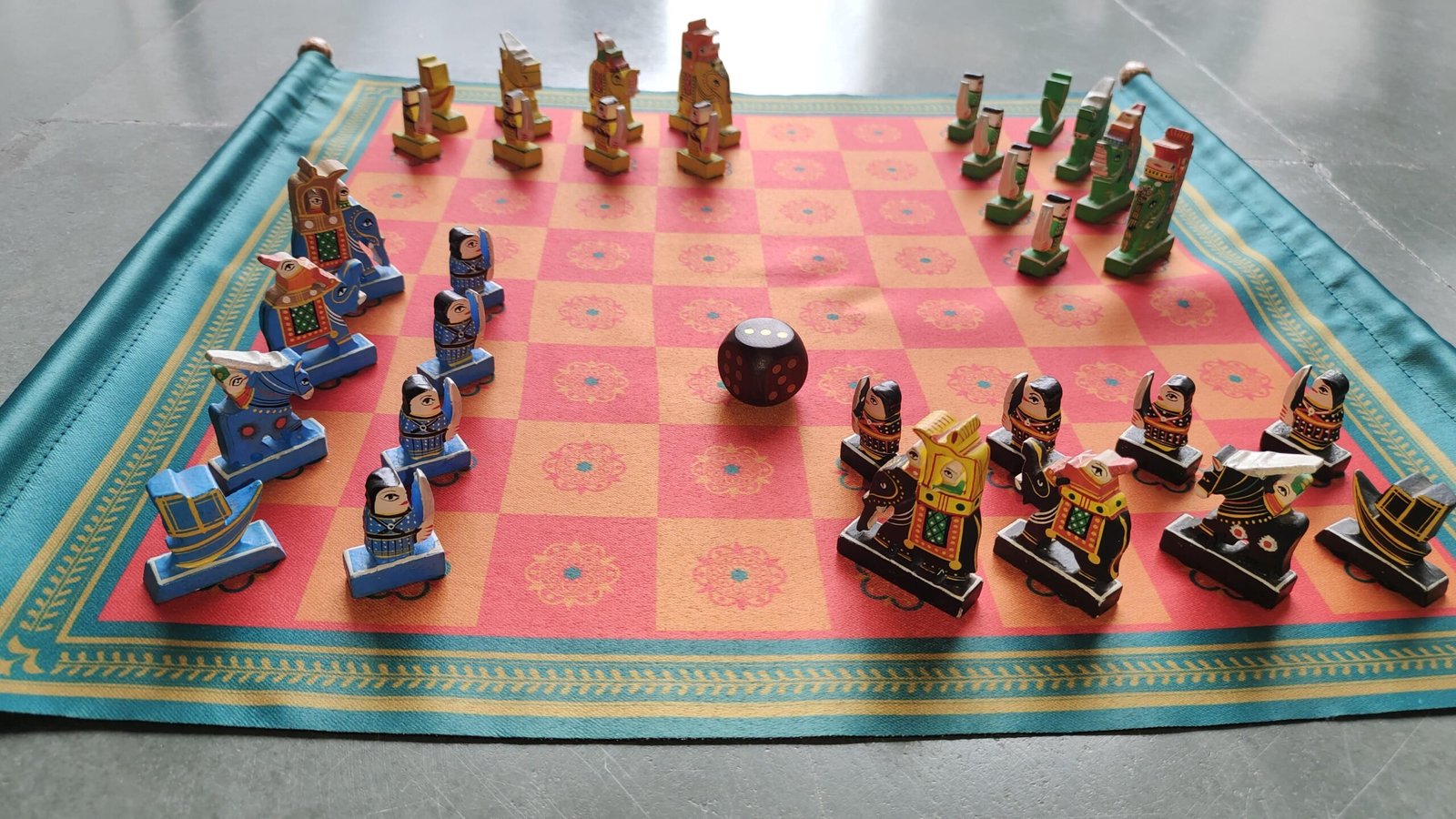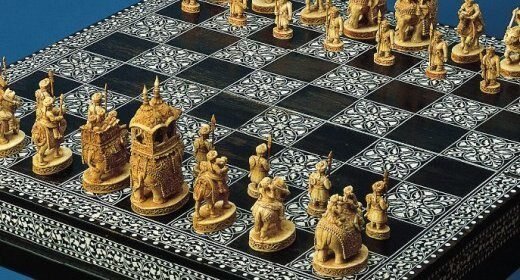Unraveling the Mysteries of Chaturanga: Exploring Ancient Indian Board Games

Imagine you’re 11 years old and its summer vacation time. Everyone is sitting at home, sipping some cold drinks and ice popsicles. Suddenly someone says “Let’s play a game”. The ‘cool’ kids would be playing Monopoly, Business, Uno, while the normal ones like you and me are playing Ludo, praying to God that may you get another 6 on the dice. Nostalgia hits really hard, doesn’t it?

Perhaps the modern-day kids think of Xbox or PS5 console when asked about games. But in simpler times, there were these super engaging board games that inspired many modern games. It may not be surprising that many of these games came from India! Only the nomenclature varies from state to state but we all would know what games I’m talking about: Chaturanga (Chess), Ashtapada, Pachisi (Pasha), Chaupar (Ludo), Moksha Patam (Saanp-Sidhi), Gyan Chaupar, Ali Guli Mane, Dayakattai (Dayaboss).

Chaturanga
One of the earlier games was a war game called, Chaturanga, a Sanskrit name for a battle formation mentioned inn Mahabharata. Chaturanga was flourishing in Northwestern India in 7th century and is regarded as one of the earlier precursors to modern day chess, because of presence of 2 key features that are also found in chess- different pieces had different powers, and the victory was based on one piece (King in today’s chess).
It’s uncertain how chaturanga evolved. According to some historians, Chaturanga originated during Gupta Empire during 6th century in North India. Chaturanga which was a board game consisting of 8*8 blocks (64- square blocks), evolved into Chatrang and later Shatranj, a 2-player game popular in India, Pakistan, Afghanistan and Central Asia after 600 BCE. Shatranj resembled Chaturanga but included a new piece, a Farzan (counselor), which had no relation to any military formation.

The game spread worldwide taking with it some regional characteristics. In the East, the Buddhist pilgrims, Silk traders carried it and transformed it into a game with inscribed disks that were often placed on the intersection of lines of the board rather than within the blocks. About 750CE it reached China and later in 11th CE to Japan and Korea.
A variant of chaturanga or Shatranj made its way to Europe via Persia, the Byzantine Empire, and, most importantly, the burgeoning Arabian Empire. The oldest known game, discovered in a 10th-century text, was played between a Baghdad historian who was thought to be a favourite of three successive caliphs and a student.
Muslims carried it to North Africa, Sicily, Spain by the 10th century. The Vikings carried the game to Iceland and England.

Chess and other dice games were periodically banned by various kings and religious leaders, like King Louis IX banned it in 1254 in France. But as a chess set was often associated with wealth, knowledge and power, its popularity gained heights. So much so that by the early 15th century, it came to be known as a Royal Game.
The modern rules and appearance of the pieces evolved slowly, along with regional variations. By 1300, for example, the pawn had learned to move two squares on its initial turn, as opposed to one at the time in Shatranj. However, this norm did not gain widespread adoption throughout Europe for more than 300 years.
Two crucial changes helped the game reach its new heights after late 15th century. The ability of Pawn to move to the 8th block and sex change and turn into a Queen (earlier it could only become a Councelor), and the Chaturanga piece called the Elephant, which could move 2 steps diagonally in Shatranj, became the bishop, more than doubling its range. Until these new moves and powers, concept of Checkmate was rare. Earlier the game would end only by baring the King.

The last 2 major change in rules- the Castling and the en passante capture- took longer to win the game. Although, introduced in 15th century, it was relatively uncommon in use by the 18th century.
The appearance of pieces was simple and ornate by the Chaturanga times. Gradually figurative sets depicting animals. Warriors, noblemen were created, but the Muslim takeover in 9th-12th century made the sets non-representational and made of clay following the Islamic ban of representational figures. The return to stylized, figurative sets is believed to have spurred the game’s popularity.
The Romans and Europeans made the pieces of semi-precious stones. The King acquired a crown and became the most important piece of the game. The Knight’s close identification with the Horse in Chaturanga still exists. The Pawn remained the same, Queen grew in size and the bishop is relatively the newest piece on the board.

Nathaniel Cook, an Englishman, established the benchmark for modern sets in 1835 with a simple design. After being copyrighted in 1849, the design was sponsored by Howard Staunton, the world’s finest player at the time; as a result of Staunton’s intensive promotion, it became known as the Staunton pattern. International competition now only allows sets based on the Staunton design.
The First major chess tournament was set of 6 matches held in 1834 between the French and British players Louis-Charles de la Bourdonnais of Paris and Alexander McDonnell of London, which ended with Bourdonnais’ victory. He was succeeded by Staunton after another match that gained international attention, Staunton’s defeat of Pierre-Charles Fournier de Saint-Amant of France in 1843.

Ironically enough, Staunton used his influence and position as unofficial world champion to popularize the Staunton-pattern set, to promote a uniform set of rules and held 1st international event in London in 1851. Karl Earnst, a German Schoolteacher won it.
FIDE (Fédération Internationale des Échecs) was established in 1924 at Paris, and since 1946 it has taken over as the authority to organize the world chess championships.
In Conclusion, exploring Chaturanga sheds light on the deep-rooted connection between India and Chess. Chaturanga laid the foundations for this game that we know now and love, from its strategic manoeuvres to philosophical undertones. India’s influence continued to be undeniable as the game evolved and spread worldwide. More and more people are aware about its origin now. No wonder why the lost glory of India, in this ancient game, is returning with new GMs like Praggnanandhaa, Gukesh, Vidit taking over world by the storm.


